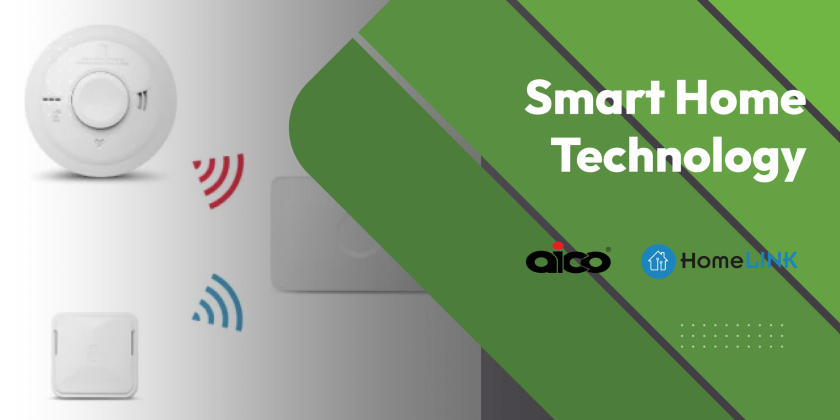Solar energy is becoming an increasingly popular choice for those looking to reduce their carbon footprint and embrace renewable energy. Understanding how solar energy produced can help demystify the technology behind it and reveal its potential benefits. This simple guide aims to break down the process, explaining how sunlight is converted into electricity through the use of solar panels. By exploring the components involved and the steps in the conversion process, this post will provide a clear and comprehensive overview of solar energy production. Whether you’re considering solar panels for your home or simply curious about the technology, this guide will equip you with the knowledge you need.
Understanding Solar Energy Basics
Solar energy is a renewable resource harnessed from the sun’s rays. This section introduces the fundamental concepts, laying the groundwork for understanding how solar energy is produced and utilised.
What is Solar Energy?
Solar energy refers to the power derived from the sun’s radiation. This energy can be captured and converted into electricity or heat. Solar power systems are designed to capture sunlight and transform it into usable energy forms. It is a clean, renewable resource that can significantly reduce carbon emissions when compared to fossil fuels.
The sun emits energy in the form of light and heat. Solar technology captures this energy through various methods. These include using solar panels and thermal collectors. Photovoltaic (PV) panels are the most common method for converting sunlight into electricity.
Solar energy has been used for centuries, but modern technology has made it a viable large-scale energy source. Its applications range from powering homes to fuelling entire cities.
How Solar Panels Work
Solar panels work by converting sunlight into electricity through a process called the photovoltaic effect. This process involves several key steps:
-
Absorption: Solar panels are made up of many smaller units called solar cells. These cells absorb sunlight, which excites electrons and creates direct current (DC) electricity.
-
Conversion: An inverter then converts this DC electricity into alternating current (AC) electricity, which is the type used by most home appliances.
-
Distribution: The AC electricity is distributed throughout the home or stored in batteries for later use.
Solar panels are typically made from silicon, a semiconductor that is effective at capturing and converting solar energy. The efficiency of these panels can vary based on their design and the materials used.
Types of Solar Energy Systems
There are several types of solar energy systems, each suited to different applications:
-
Grid-tied systems: These systems are connected to the public electricity grid, providing power during the day and drawing from the grid at night or during cloudy periods.
-
Off-grid systems: These systems are entirely independent of the grid, using batteries to store electricity for use when the sun isn’t shining.
-
Hybrid systems: Combining both grid-tied and battery storage, these systems offer maximum flexibility and reliability.
Each system type has its own advantages and disadvantages. Grid-tied systems are generally more cost-effective, while off-grid systems provide greater energy independence.
How Solar Energy Produced
Understanding how solar energy is produced involves delving into the technology and processes behind solar power systems. This section explores these key elements.
Photovoltaic Cells Explained
Photovoltaic (PV) cells are the building blocks of solar panels. They are responsible for converting sunlight into electricity. Each PV cell is made up of semiconductor materials, usually silicon, which absorb photons from sunlight.
When sunlight hits a PV cell, it excites electrons, creating an electric current. This current is direct current (DC), which is not directly usable by most home appliances. Therefore, an inverter is needed to convert it to alternating current (AC).
PV cells are arranged in panels to increase power output. The efficiency of a PV cell depends on its material and construction. Advances in technology continue to improve the efficiency and cost-effectiveness of these cells.
Solar Thermal Technology
Solar thermal technology harnesses the sun’s energy to produce heat rather than electricity. This heat can be used directly or converted into electricity through other means.
Solar thermal systems typically use mirrors or lenses to concentrate sunlight onto a receiver. This concentrated solar power can heat a fluid, which then produces steam to drive a turbine connected to a generator.
These systems are often used in large-scale power plants. They are especially effective in sunny regions where sunlight is abundant. Solar thermal technology complements photovoltaic systems by providing an alternative way to harness solar energy.
The Role of Inverters
Inverters play a crucial role in solar energy systems. They convert the direct current (DC) electricity generated by solar panels into alternating current (AC) electricity.
This conversion is necessary because most household appliances operate on AC electricity. Inverters also help optimise the power output from solar panels by managing the flow of electricity.
There are different types of inverters, including string inverters, microinverters, and power optimisers. Each type has its own benefits and is suited to different system configurations.
Benefits of Solar Energy
Solar energy offers numerous benefits, from environmental advantages to cost savings. This section discusses these benefits in detail, highlighting why solar energy is an attractive option.
Environmental Impact
Solar energy is a clean and sustainable energy source. Unlike fossil fuels, it produces no direct emissions, making it environmentally friendly.
Using solar energy reduces reliance on non-renewable resources, helping to combat climate change. It also reduces air and water pollution, contributing to a healthier planet.
Switching to solar energy can drastically lower your carbon footprint. It also supports biodiversity by reducing habitat destruction associated with fossil fuel extraction.
Cost Efficiency Over Time
While the initial investment in solar energy systems can be high, they offer significant cost savings over time. Once installed, solar panels have low maintenance costs and can reduce or even eliminate electricity bills.
Government incentives and tax credits can further reduce the upfront costs. Over time, the savings on energy bills can offset the initial investment, making solar energy a financially wise choice.
In addition, solar energy increases property value, providing a long-term return on investment.
Energy Independence and Security
Solar energy increases energy independence by reducing reliance on external energy sources. This is especially important in regions with unstable energy supplies or high electricity costs.
By generating your own electricity, you have greater control over your energy usage and costs. Solar energy systems also provide a reliable power source during outages.
Energy independence enhances national security by reducing dependence on foreign energy imports. It also contributes to economic stability by creating jobs in the renewable energy sector.
Challenges in Solar Energy Production
Despite its advantages, solar energy production faces several challenges. This section explores these challenges and their implications for the widespread adoption of solar technology.
Initial Investment and Costs
The initial cost of solar energy systems can be a barrier for many individuals and businesses. High upfront costs may deter potential users despite long-term savings.
However, prices have been decreasing, and various financing options are available. Government incentives and rebates can also help alleviate the financial burden.
Understanding the cost-benefit analysis is critical for making an informed decision about investing in solar energy.
Weather Dependency
Solar energy production is influenced by weather conditions. Cloudy days, rain, and shorter daylight hours in winter can reduce the amount of electricity generated.
Although solar panels can still produce energy on cloudy days, their efficiency is significantly lower. This dependency on sunlight can be a disadvantage in regions with less consistent sunlight.
Energy storage systems or hybrid systems can mitigate this issue, ensuring a stable power supply regardless of weather conditions.
Storage and Efficiency Concerns
Energy storage is a critical component of solar energy systems. Without effective storage solutions, excess energy generated during sunny periods may be wasted.
Battery technology is advancing, but current options can be costly and have limited capacity. Efficient storage solutions are necessary for maximising the benefits of solar energy.
Improving storage technology and efficiency remains a focus for researchers, aiming to make solar energy a more viable option for all users.
Future of Solar Energy
The future of solar energy looks promising with ongoing innovations and increasing global adoption. This section examines the potential developments and trends in solar technology.
Innovations in Solar Technology
Innovation in solar technology continues to drive the industry forward. New materials and methods are being developed to increase the efficiency and affordability of solar panels.
Emerging technologies, such as bifacial panels and solar skins, promise to revolutionise the market. These advancements aim to make solar energy more accessible and appealing to a broader audience.
Research into perovskite solar cells and organic photovoltaics offers exciting possibilities for the future of solar energy.
Government Policies and Support
Government policies play a crucial role in promoting solar energy adoption. Many countries offer incentives, subsidies, and tax credits to encourage the use of solar technology.
Regulations and targets for renewable energy usage can drive investment in solar infrastructure. Supportive policies are essential for overcoming barriers and fostering growth in the solar sector.
Engaging with policymakers is important for ensuring the continued advancement and integration of solar energy solutions.
Global Adoption Trends
Worldwide, solar energy adoption is increasing as countries seek to meet renewable energy targets. The costs of solar panels have dropped, making them accessible to more people.
Countries like China, the United States, and Germany are leading in solar energy production. Their investments in solar technology drive global growth and innovation.
The global shift towards renewable energy is crucial for addressing climate change. Solar energy is expected to play a vital role in this transition, offering sustainable solutions for future energy needs.


